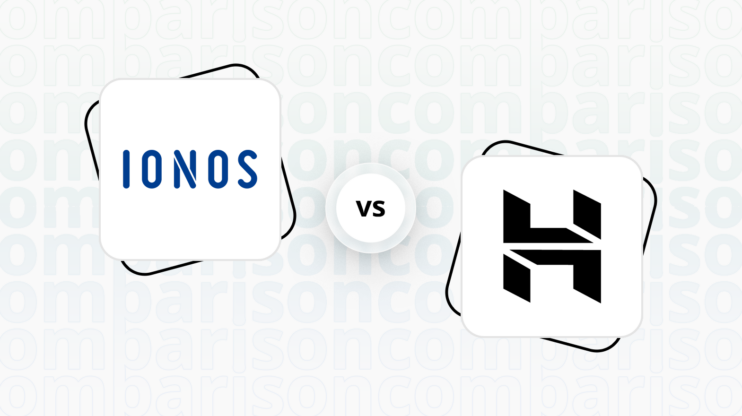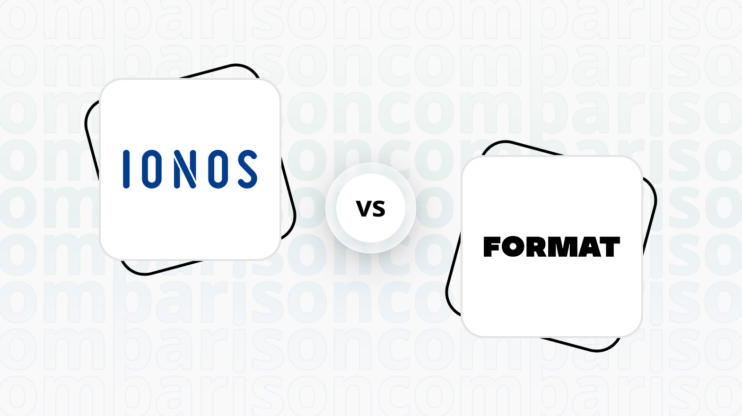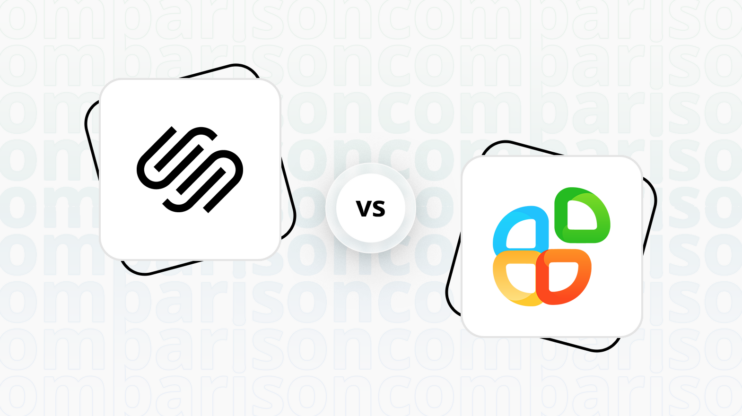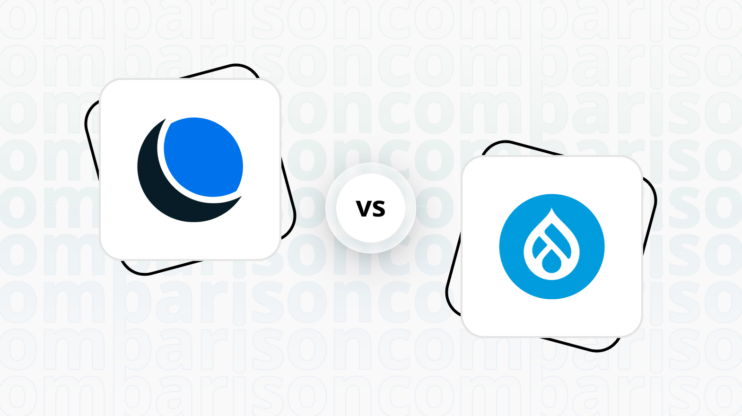Final verdict
Adobe Portfolio and Drupal cater to different user needs, each excelling in their respective domains.
-
Adobe Portfolio (Overall Grade: 5.5/10)
is tailored for creative professionals looking to showcase their work with minimal fuss. It offers a user-friendly interface, seamless integration with Adobe Creative Cloud, and a range of customizable templates. However, it lacks ecommerce capabilities and advanced customization options, making it less suitable for complex websites or online stores. Adobe Portfolio is ideal for photographers, graphic designers, and artists who need a straightforward platform to build a professional online presence. -
Drupal (Overall Grade: 6.4/10)
stands out for its flexibility and extensibility, making it a powerful choice for building complex websites and applications. With a vast array of modules and themes, Drupal offers extensive customization and scalability. It excels in ecommerce, security, and user management, but comes with a steep learning curve that can be challenging for beginners. Drupal is suitable for a variety of websites, from personal blogs to corporate and government sites, making it a versatile choice for web development.

|

|
|
|---|---|---|
|
Design functionalities & templates |
7.4 |
7.8 |
|
Ease of use |
8.7 |
5.4 |
|
Ecommerce |
0.0 |
7.5 |
|
Website Editors |
7.4 |
7.5 |
|
Product testing options |
7.6 |
7.1 |
|
Price |
7.7 |
5.7 |
|
Hosting quality |
7.0 |
0 |
|
Website speed optimization |
6.2 |
6.4 |
|
Plugins and integrations |
6.7 |
8.6 |
|
Marketing features |
3.7 |
8.0 |
|
Customer support |
7.3 |
6.7 |
|
Security |
8.1 |
8.3 |
|
AI capabilities |
0 |
7.5 |
|
User Management |
3.0 |
9.1 |
Best for ecommerce
 0.0
0.0
 7.5
7.5
Verdict
: Adobe Portfolio is not designed for ecommerce, making Drupal the clear choice for those needing robust ecommerce capabilities.
-
Adobe Portfolio
: This platform is tailored for creative professionals to showcase their work and does not include any ecommerce features. It is ideal for photographers, graphic designers, and artists who need a visually appealing online portfolio but do not require ecommerce functionalities. -
Drupal
: With its Drupal Commerce module, Drupal offers a comprehensive ecommerce solution. It supports shopping cart and checkout processes, payment gateway integration, order management, tax calculation, shipping, promotions, and detailed reporting. This makes Drupal a versatile and powerful choice for building complex ecommerce websites.
Best for informational & business websites
 7.4
7.4
 7.5
7.5
Verdict
: When comparing Adobe Portfolio vs Drupal, Drupal slightly edges out Adobe Portfolio for informational and business websites due to its flexibility and extensive customization options.
-
Adobe Portfolio
: Adobe Portfolio is tailored for creative professionals who need a visually appealing and easy-to-use platform to showcase their work. It offers a user-friendly interface and seamless integration with Adobe Creative Cloud, making it ideal for photographers, graphic designers, and artists. However, its focus on creative portfolios means it may lack some of the advanced functionalities required for more complex business websites.
Score: 7.4
-
Drupal
: Drupal is a powerful open-source CMS known for its flexibility and extensibility. It is suitable for a wide range of websites, from personal blogs to complex corporate sites. Drupal offers a vast array of modules and themes, allowing for extensive customization and scalability. While it has a steeper learning curve, its robust features make it a versatile choice for developers looking to build comprehensive informational and business websites.
Score: 7.5
Detailed comparison
Design functionalities & templates
Design FunctionalitiesRepresents how well each platform allows for creative design and customization of websites.Score Components:
- Template Variety (30%): Range and quality of design templates.
- Customization (30%): Flexibility and options for design alterations.
- User Interface (20%): Ease and intuitiveness of the design process.
- Responsiveness (10%): Adaptability to different devices and screen sizes.
- Innovation (10%): Unique design features and tools.
 7.4
7.4
 7.8
7.8
🏆
Winner: Drupal.
If you’re looking for a platform that offers more creative control, a wide array of design features, and a vast selection of templates, Drupal is the preferred choice.
Adobe Portfolio offers a selection of customizable templates designed for creatives across various fields, such as photography, graphic design, and web design. These templates are responsive and tailored to showcase creative work effectively across all devices.
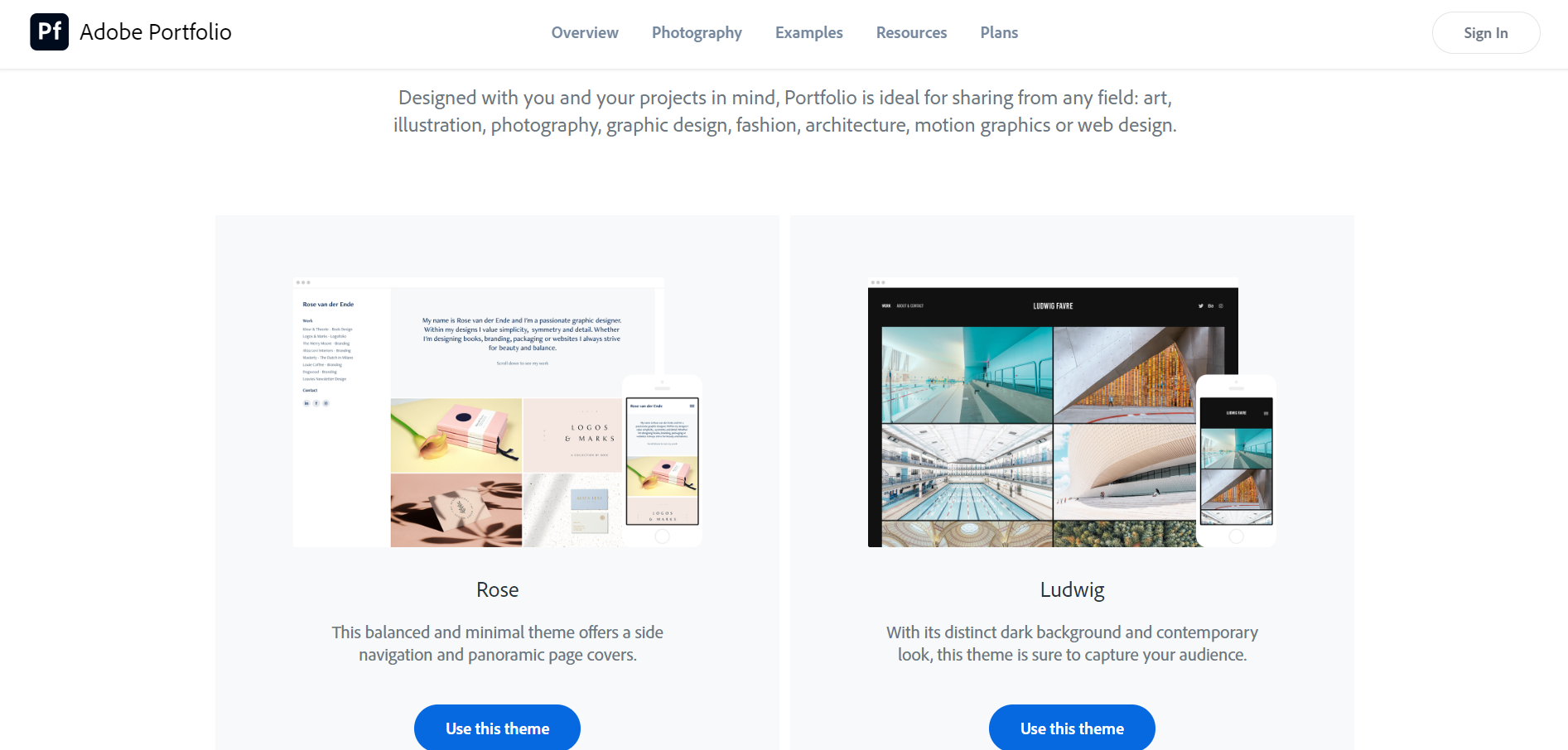
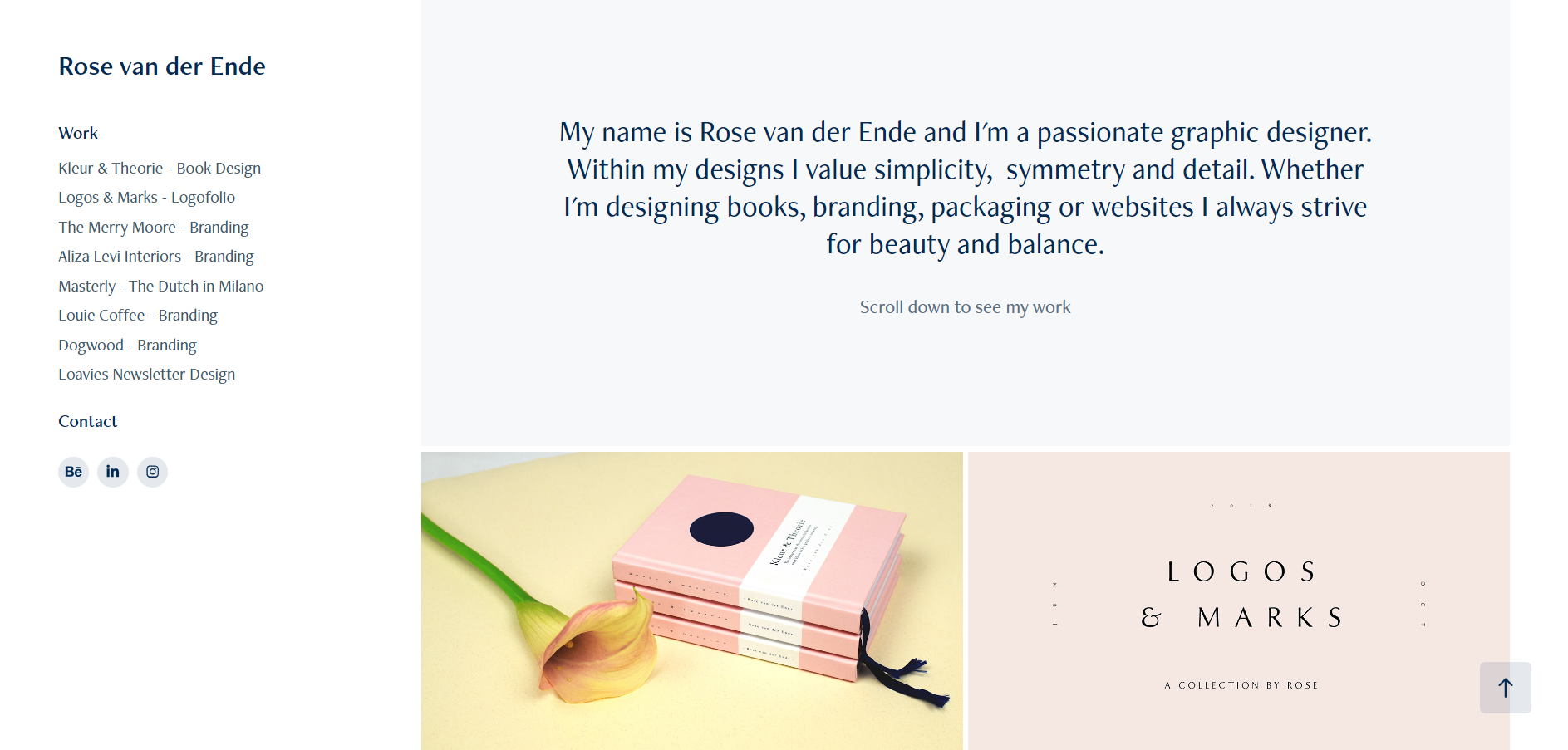
Compared to Adobe Portfolio, Drupal, as a highly flexible and powerful content management system, offers a vast array of templates and designs to cater to virtually any website need. With thousands of themes available, users can choose from minimalist designs, industry-specific layouts, and highly customizable multipurpose themes.
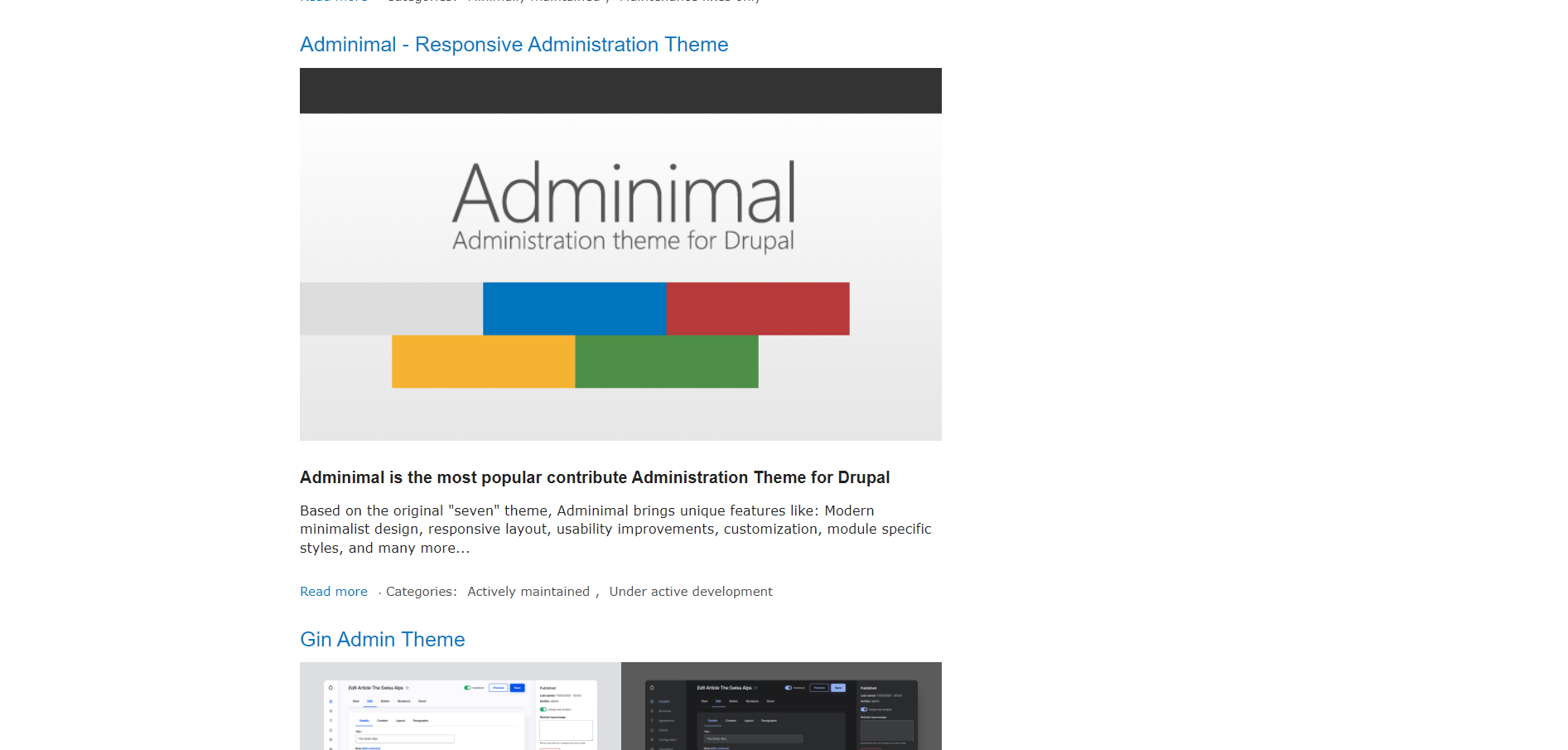
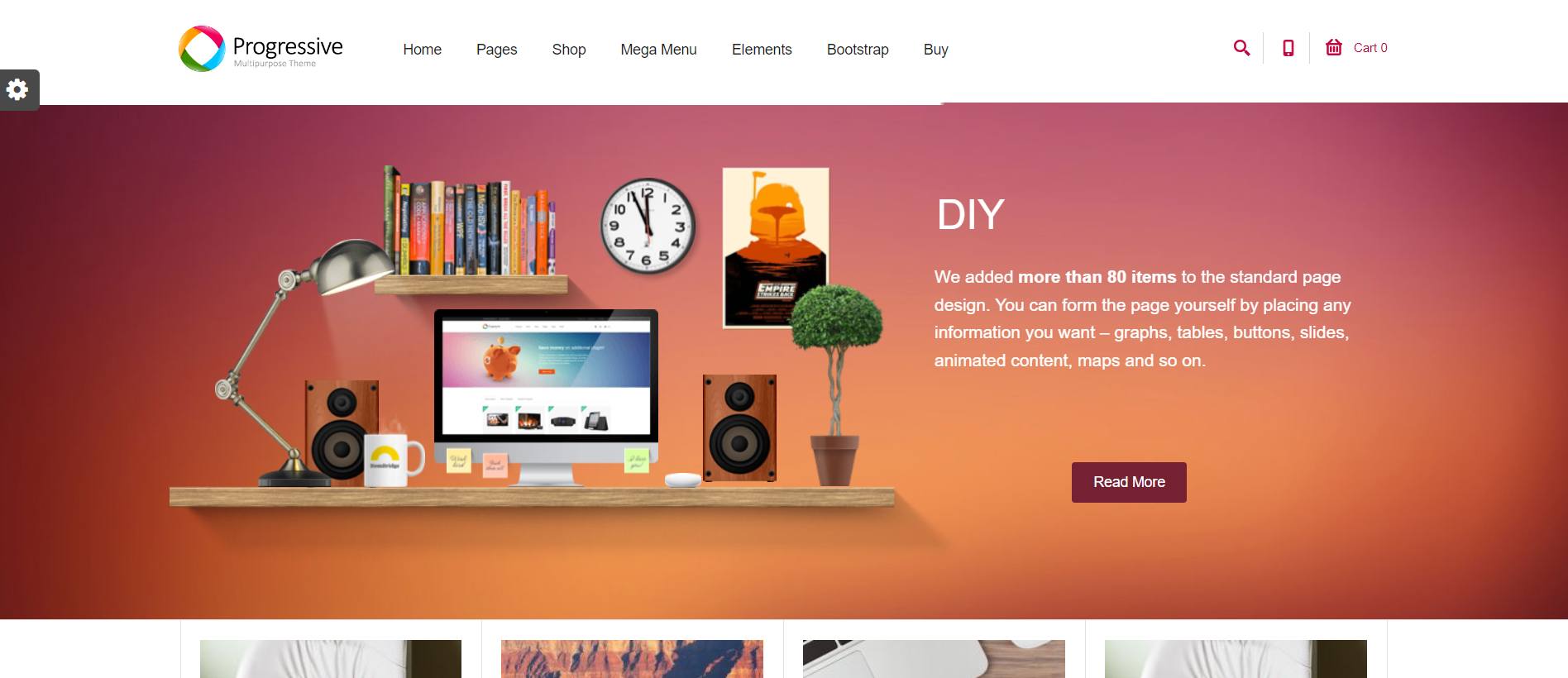
Get a head start on website creation with AI
Create a custom website tailored to your business needs 10X faster with 10Web AI Website Builder!
Ease of use
Ease of useReflects the platform’s overall user-friendliness.Score
Components:
- Learning curve (40%): Quickness and ease of getting started.
- Interface design (30%): Simplicity and intuitiveness of layout.
- User guidance (20%): Quality of tutorials and support.
- Flexibility (10%): Adaptability to various user skills.
 8.7
8.7
 5.4
5.4
🏆 Winner: Adobe Portfolio
. With a score of 8.7, Adobe Portfolio is designed with a user-friendly interface that caters to creatives looking to showcase their work with minimal fuss. On the other hand, Drupal, scoring 5.4, is known for its flexibility and extensibility, making it a powerful platform for building complex websites and applications. However, this flexibility comes with a steep learning curve that can be challenging for beginners or those not familiar with web development principles.
Learning Resources
Both Adobe Portfolio and Drupal offer extensive learning resources. Adobe Portfolio provides detailed tutorials and articles covering a broad spectrum of topics, from basic setup to advanced customization. Drupal offers a wealth of learning resources, including extensive official documentation, a vibrant community forum, and a variety of online courses and tutorials.
For ecommerce
EcommerceMeasures the platform’s effectiveness in supporting online business activities.Score Components:
- Ecommerce themes and templates (20%): Variety and design of templates.
- Product management (25%): Ease of managing and organizing products.
- Payment options (25%): Variety and convenience of payment methods.
- Ecommerce features (20%): Features for managing an ecommerce store.
- Integration (10%): Compatibility with external e-commerce tools and services.
 0.0
0.0
 7.5
7.5
When it comes to ecommerce, Drupal and Adobe Portfolio are on opposite ends of the spectrum. Adobe Portfolio, designed specifically for creative professionals to showcase their work, does not offer any ecommerce capabilities. On the other hand, Drupal, with its Drupal Commerce module, provides a comprehensive ecommerce solution that can be seamlessly integrated into its content management system.

|

|
|
|---|---|---|
|
Ecommerce themes and templates |
0.0 |
7.8 |
|
Product page customization |
0.0 |
8.3 |
|
Payment processing and commissions |
0.0 |
7.5 |
|
POS capabilities |
0.0 |
5.5 |
|
Payment gateways |
0.0 |
7.7 |
|
Product numbers |
0.0 |
7.0 |
|
Additional ecommerce features |
0.0 |
8.0 |
Adobe Portfolio ecommerce features:
Adobe Portfolio does not have any ecommerce features.
Drupal ecommerce features:
- Shopping Cart and Checkout Process
- Payment Gateway Integration
- Order Management and Invoicing
- Tax Calculation and VAT Support
- Shipping and Fulfillment
- Promotions and Discounts
- Reporting and Analytics
- Security and Compliance
Ecommerce themes & templates
Adobe Portfolio does not have any ecommerce specific templates. In contrast, Drupal offers a wide array of ecommerce themes designed to cater to different types of online stores. These themes are built with responsiveness in mind, ensuring that stores function seamlessly across various devices. Themes like Fiora, DrupalMag, and Storefront highlight the diversity available, offering customization options to match the unique needs of each business.
Product page customization
Adobe Portfolio does not have product page customization features. However, Drupal offers extensive customization possibilities for product pages through its modular architecture. This allows for detailed content types, flexible displays with Views, and theme customizations. The Drupal Commerce module enriches ecommerce functionalities, enabling tailored product management, checkout flows, and payment systems.
Payment processing
Adobe Portfolio does not have any payment processing capabilities. Drupal, on the other hand, supports a wide range of payment gateways through third-party modules, including popular ones like PayPal, Stripe, and Authorize.Net. These modules enable seamless integration for ecommerce functionalities on Drupal sites. While Drupal itself does not charge any commissions or transaction fees, the individual payment gateways integrated with it do have their own fee structures. The specific fees depend on the chosen payment gateway and the terms of service agreed upon by the website owner.
Website Editors
Website EditorsEvaluates the platforms’ website building and editing capabilities.Score Components:
- Customization tools (40%): Range and power of editing features.
- Editor usability (30%): User experience within the editor.
- Design flexibility (20%): Freedom in layout and design changes.
- Update and maintenance ease (10%): Simplicity of updating and maintaining the site.
 7.4
7.4
 7.5
7.5
🏆
Winner: Drupal
. Drupal, with a score of 7.5, offers a wide range of features tailored for content creation and management. It supports rich text editing, enabling users to format text, insert links, images, and media, as well as create tables and lists with ease. The editor is highly customizable, allowing administrators to configure toolbars and options according to the needs of their site. Furthermore, it integrates seamlessly with Drupal’s content management system, supporting features like automatic content saving, version control, and access control, making it a powerful tool for building and managing diverse web content.
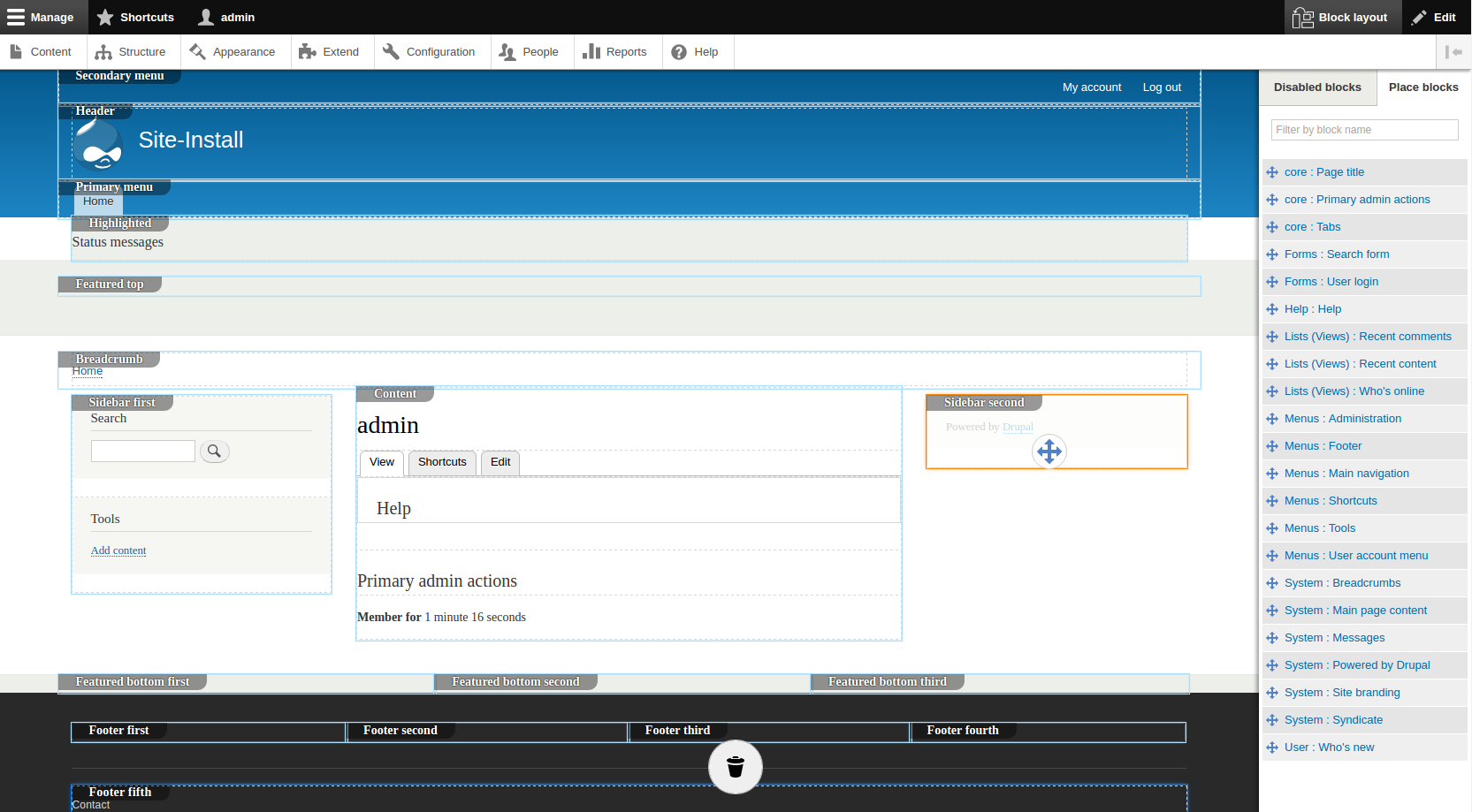
Adobe Portfolio’s editor, scoring 7.4, is designed for creatives to showcase their work. With it, users can easily create and customize their own professional-looking websites without needing to code. The editor allows for the integration of high-quality images and videos, offers a variety of responsive templates tailored to different creative fields, and provides seamless Adobe Creative Cloud integration, enabling users to directly import their work. Additionally, Adobe Portfolio supports custom domain names and offers access to Adobe Fonts, enhancing the aesthetic appeal and functionality of the user’s website.
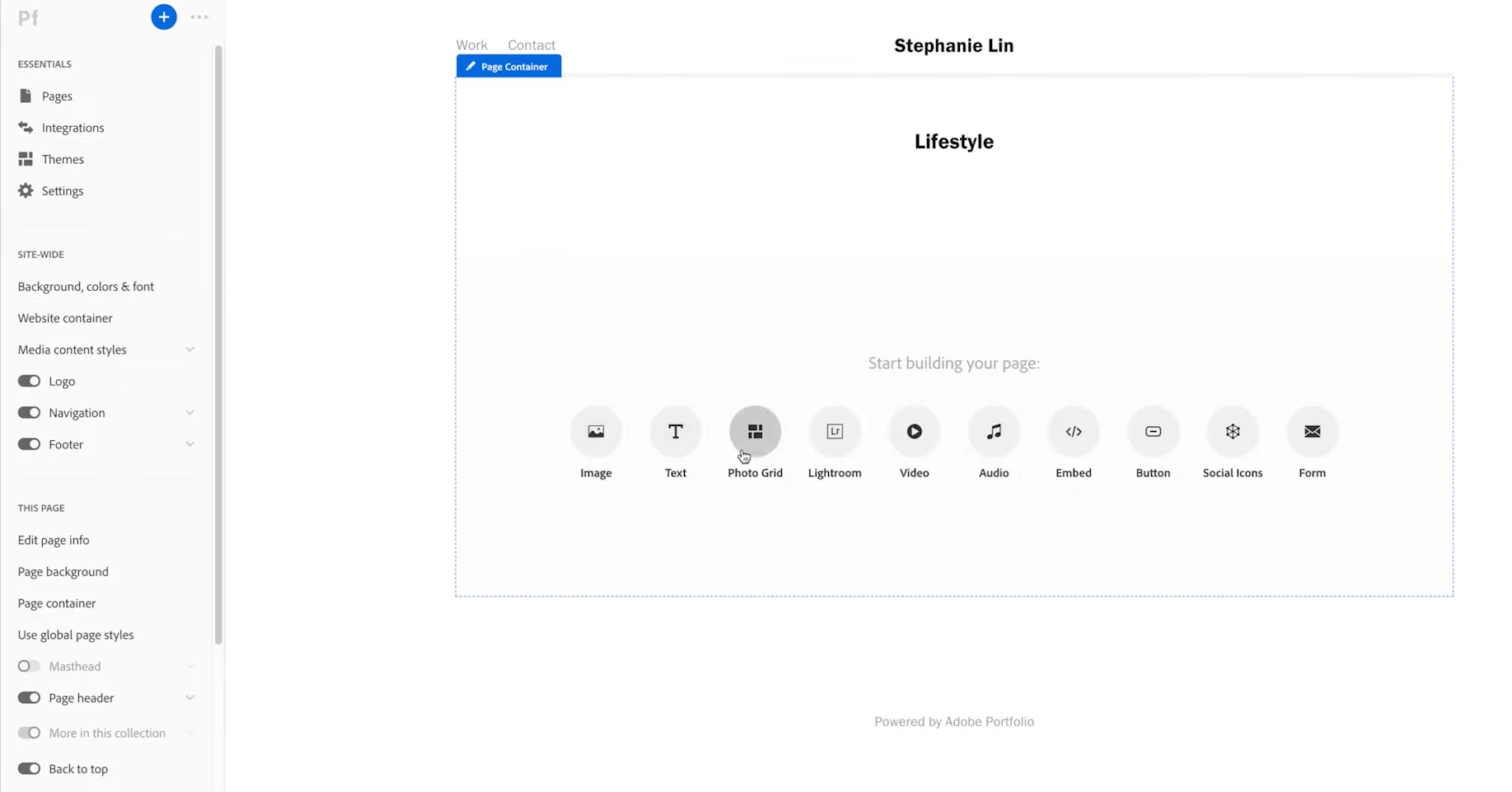
Mobile editor/app
 0
0
 0
0
🏆
Winner: None
. Unfortunately, neither Adobe Portfolio nor Drupal offers a dedicated mobile editor app. This means that users cannot edit their websites on the go using a mobile device. This could be a significant drawback for users who prefer or need to make quick changes to their websites from anywhere. Therefore, if mobile editing is a crucial feature for you, you might want to consider other website builders that offer this capability.
Product testing options
Product Testing OptionsAssesses the options for trying out platform features before commitment.Score Components:
- Trial quality (40%): Extent and usefulness of the trial or free version.
- Feature accessibility (30%): How many features are available to test.
- Trial duration (20%): Length of the trial period.
- Ease of transition (10%): Smoothness of moving from trial to paid plans.
 7.6
7.6
 7.1
7.1
Overall Result
:
Adobe Portfolio wins
. Adobe Portfolio scores 7.6, slightly higher than Drupal’s 7.1. Adobe Portfolio offers a trial version where users can explore all features and even create a portfolio website. However, users cannot publish their website without subscribing to a plan. Additionally, users can test the features further during the 14-day refundable period. On the other hand, Drupal, being an open-source CMS, does not offer a trial version or the possibility to test premium features.

|

|
|
|---|---|---|
|
Free Plan |
No |
Yes (open-source software) |
|
Trial Duration |
Yes |
No |
|
Testing Premium Features |
Yes |
No |
|
Money Back Guarantee |
14-day money back guarantee |
No payments required |
Price
PriceLooks at the cost-effectiveness and value for money of each platform.Score Components:
- Plan value (40%): What each pricing tier offers.
- Transparency and clarity (30%): Clearness of pricing structures.
- Flexibility of plans (20%): Range of options to suit different budgets.
- Hidden costs (10%): Additional expenses not included in the plan.
 7.7
7.7
 5.7
5.7
Adobe Portfolio offers paid plans with a range of features, while Drupal is a free, open-source platform, but requires separate purchases for domain, hosting, and website builder subscriptions.

|

|
|
|---|---|---|
|
$0-$10 |
Creative Cloud – Photography ($9.99/month): Up to 5 Portfolio sites with fonts from Adobe Fonts, and with access to Photoshop and Lightroom and 20GB storage. Value for price: 7.0 |
No offering at this amount. |
|
$50+ |
Creative Cloud – All Apps ($59.99/month): Up to 5 Portfolio sites with the entire collection of Adobe creative apps, including Photoshop, Illustrator and InDesign, with 20 GB storage. Value for price: 8.5 |
No offering at this amount. |
location. As a result in rare cases the prices displayed here can differ from the ones you see on their
websites.
Hosting quality
Hosting
qualityExamines the reliability and performance of the hosting solutions.Score Components:
- Uptime (40%): Consistency and reliability of website availability.
- Speed (30%): Loading times and performance.
- Bandwidth and storage (20%): Sufficiency of resources provided.
- Data centers (10%): Quality and distribution of hosting infrastructure.
 7.0
7.0
 0
0
Winner: Adobe Portfolio
Adobe Portfolio offers cloud hosting with 20GB of storage and has data centers in the US, Ireland, and Japan. However, it does not provide uptime statistics or an uptime guarantee. On the other hand, Drupal does not offer hosting services directly. The type of hosting, uptime, and data centers depend on the hosting provider chosen by the user. Therefore, Adobe Portfolio scores higher in hosting quality due to its direct hosting services.

|

|
|
|---|---|---|
|
Do they offer hosting? |
Yes, including a built-in myportfolio.com domain and 20GB of cloud storage. However if users want to have a custom domain, it’s necessary to purchase one separately from third-party domain providers. | No, Drupal itself does not directly provide hosting services. |
|
Data Centers: |
3 globally: US, Ireland and Japan | Data centers depend on hosting providers |
|
Type of hosting: |
Cloud Hosting | Drupal itself isn’t a hosting platform, there are various options when choosing the type of hosting for websites built with Drupal, such as: Shared Hosting, VPS Hosting, Dedicated Server Hosting, Cloud Hosting |
|
Uptime: |
Adobe Portfolio does not publish its uptime statistics, nor does it provide an uptime guarantee. However, it’s safe to assume that Adobe’s servers maintain a high level of uptime. | Uptime & uptime guarantee depends on hosting provider. |
Website Speed Optimization
Website Speed OptimizationEvaluates optimization of website loading timesScore Components:
- PageSpeed Score (30%): Google’s score indicating performance optimization.
- Loading Time (30%): The average time until a website is fully interactive.
- Mobile Optimization (15%): Optimization effectiveness for mobile devices.
- Resource Optimization (15%): Optimizing images, scripts, and other heavy resources.
- CDN Usage (10%): Use of CDN to enhance speed across geolocations.
 6.2
6.2
 6.4
6.4
🏆 Winner: Drupal
Both Adobe Portfolio and Drupal prioritize website performance and page speed, but Drupal’s flexibility and extensibility give it a slight edge when it comes to website speed optimization.

|

|
|
|---|---|---|
|
Focus |
Image optimization, SEO and Meta Tag Configurations |
Drupal offers numerous guides and tutorials on speed optimization |
|
Performance Tools |
Adobe Creative Cloud |
Drupal’s wide range of modules and themes |
|
Key Strategies |
Image optimization, SEO and Meta Tag Configurations |
Users can optimize almost all aspects of their website |
|
Load Times |
Varies depending on design choices and content volume |
Varies depending on optimization and website complexity |
|
Page Speed Scores Range |
Varies depending on design choices and content volume |
Varies depending on optimization and website complexity |
|
Core Web Vitals Improvement |
Adobe Portfolio does not disclose any information about its Core Web vitals improvements |
Core Web Vitals improvements depend on users |
Adobe Portfolio, designed for creative professionals, focuses on image optimization and SEO and Meta Tag Configurations for speed optimization. The load times and PageSpeed scores vary depending on specific design choices and content volume. However, Adobe Portfolio’s emphasis on simple portfolio websites should ensure good loading times and Page Speed scores. Adobe Portfolio does not disclose any information about its Core Web vitals improvements.
On the other hand, Drupal, an open-source content management system (CMS), offers numerous guides and tutorials on speed optimization, allowing users to optimize almost all aspects of their website. The load times and PageSpeed scores vary depending on optimization and website complexity. The Core Web Vitals improvements depend on the users, giving them the flexibility to improve their website’s performance.
Get a head start on website creation with AI
Create a custom website tailored to your business needs 10X faster with 10Web AI Website Builder!
Plugins and integrations
Plugins and integrationsMeasures the range and effectiveness of additional plugins and integrations.Score Components:
- Variety of options (40%): Range of available add-ons.
- Integration smoothness (30%): Ease of integrating plugins into the site.
- Quality of plugins (20%): Functionality and reliability of the options.
- Custom integration capabilities (10%): Support for custom or third-party integrations.
 6.7
6.7
 8.6
8.6
🏆 Winner: Drupal.
With a score of 8.6, Drupal outperforms Adobe Portfolio (6.7) in terms of plugins and integrations. Drupal’s extensive library of over 51,000 modules, most of which are free and open-source, offers a high level of customization and scalability. This makes it suitable for a variety of web projects, from simple blogs to complex corporate websites.
On the other hand, Adobe Portfolio, while offering seamless integration with Adobe services, is more focused on creative professionals looking to showcase their work. Its integrations are designed to enhance the user experience and provide additional customization options for online portfolios. However, compared to Drupal, it offers less flexibility and extensibility.
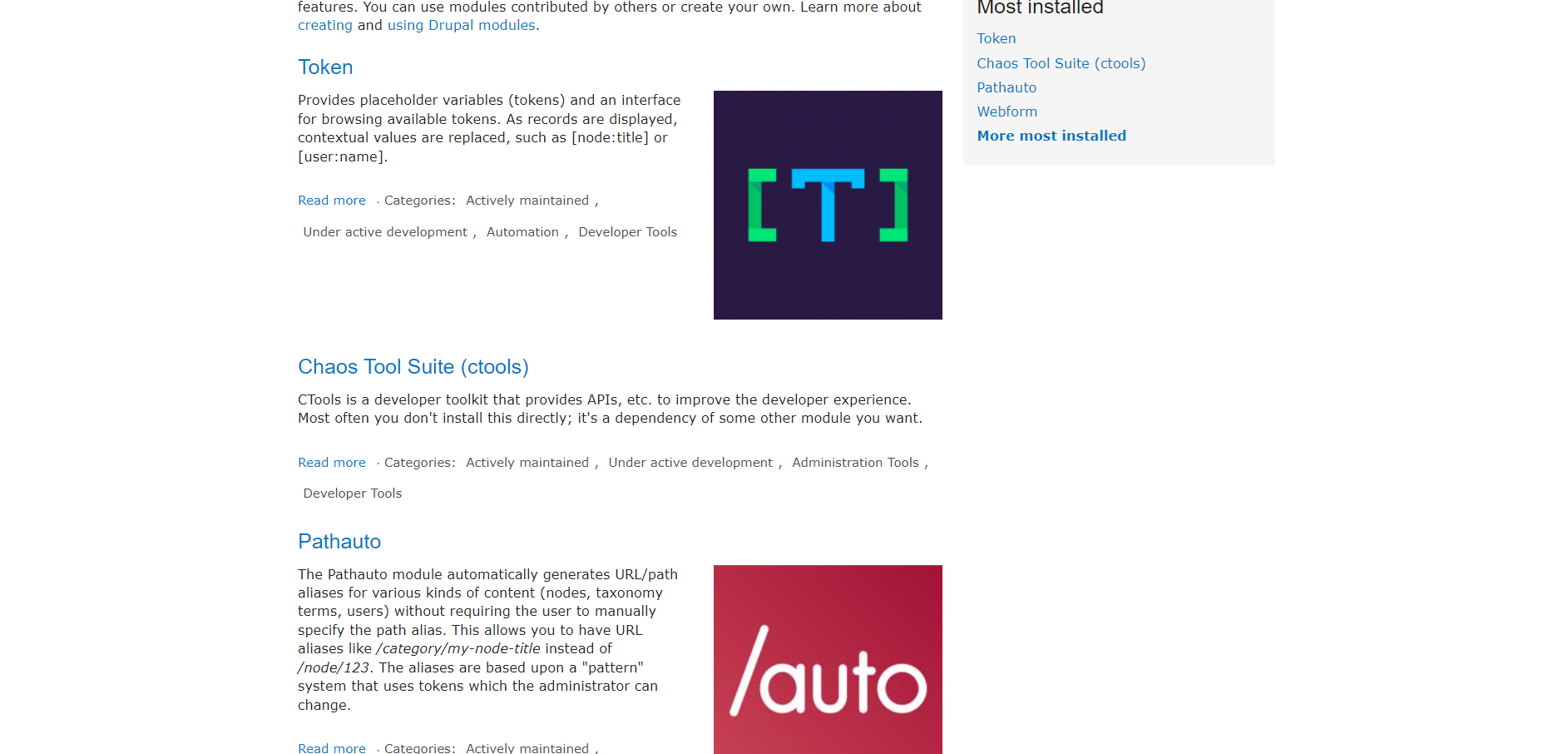
Marketing Features
Design FunctionalitiesRepresents how well each platform allows for creative design and customization of websites.Score Components:
- Template Variety (30%): Range and quality of design templates.
- Customization (30%): Flexibility and options for design alterations.
- User Interface (20%): Ease and intuitiveness of the design process.
- Responsiveness (10%): Adaptability to different devices and screen sizes.
- Innovation (10%): Unique design features and tools.
 3.7
3.7
 8.0
8.0
🏆
Overall Winner: Drupal
. Drupal stands out for its comprehensive SEO features, email marketing through third-party extensions, blogging capabilities, advanced social media integration, robust analytics and reporting, and flexible ads and promotions. Adobe Portfolio, while offering basic SEO tools and social media integration, lacks in email marketing, blogging, and ads and promotions.

|

|
|
|---|---|---|
|
SEO Tools |
Basic SEO features |
Comprehensive SEO features with SEO modules |
|
Email Marketing |
No |
Yes, with third-party extensions |
|
Blogging |
No |
Yes |
|
Social Media Integration |
Yes, but limited |
Comprehensive integration |
|
Analytics and Reporting |
Yes, users can use Google Analytics |
Basic built-in features, and Google Analytics integrations through modules |
|
Ads and Promotions |
No |
Yes, but with third-party extensions |
Customer Support
Customer supportEvaluates the quality and availability of support options.Score Components:
- Response time (40%): Speed of support responses.
- Support quality (30%): Effectiveness and helpfulness of the support.
- Availability (20%): Range of support channels (phone, chat, email).
- Resource richness (10%): Quality of self-help and educational materials.
 7.3
7.3
 6.7
6.7
🏆 Winner: Adobe Portfolio
. When comparing Adobe Portfolio vs Drupal, Adobe Portfolio takes the lead in customer support with a score of 7.3. Adobe Portfolio offers a range of support options, including a comprehensive knowledge base, FAQs, live chat, and phone support. The emphasis on self-service help is beneficial for users who prefer finding solutions independently, and the integration with Adobe Creative Cloud adds an extra layer of convenience for creative professionals.
Drupal, with a customer support score of 6.7, provides a robust community support system through Drupal.org, which includes forums and extensive documentation. Additionally, professional 24/7 support services are available via providers like Drupal Connect, offering flexible “pay-as-you-go” plans. While Drupal’s community and professional support options are extensive, they may not be as immediately accessible or user-friendly as Adobe Portfolio’s support offerings.
Security
SecurityLooks at the platforms’ security measures and data protection.Score Components:
- Data protection (40%): Safeguards for user and customer data.
- SSL and encryption (30%): Implementation of secure connections.
- Compliance (20%): Adherence to industry security standards.
- Regular updates (10%): Frequency of security updates and patches.
 8.1
8.1
 8.3
8.3
🏆
Winner: Drupal
. Drupal’s security measures are more comprehensive and robust, offering regular updates, advanced security features like two-factor authentication, and extensive access control capabilities. Drupal’s proactive security approach is bolstered by a dedicated security team that continuously works on identifying and fixing vulnerabilities.
Adobe Portfolio, on the other hand, offers basic security measures such as SSL certificates and the ability to password protect the entire website or specific pages. Adobe also prioritizes the security and privacy of user and customer data, implementing comprehensive data protection measures aligned with major regulatory frameworks. However, compared to Drupal, Adobe Portfolio’s security measures are less extensive.
AI Capabilities
AI capabilitiesMeasures the effectiveness of AI-driven features and tools.Score Components:
- Automation efficiency (40%): Impact of AI on streamlining processes.
- Personalization (30%): AI-driven customization for users or customers.
- AI-Assisted design (20%): Role of AI in website design and functionality.
- Data analysis (10%): Use of AI in interpreting user data and analytics.
 0
0
 7.5
7.5

|

|
|
|---|---|---|
|
AI Builder |
|
|
|
AI Ecommerce features |
|
Yes |
|
AI content generation |
|
Yes |
|
Additional AI features |
|
Yes |
🏆 Winner: Drupal
. Drupal, with a score of 7.5, integrates AI across various functionalities, enhancing e-commerce through chatbots, content creation, marketing automation, and cognitive services for improved user interactions. Features include natural language processing for interactive chatbots, automated content generation and SEO optimization, and cognitive services like emotion and facial recognition to enhance user experiences. These AI capabilities streamline operations and significantly enhance user engagement and satisfaction on Drupal-based platforms.
Adobe Portfolio, on the other hand, does not have any AI capabilities. It is a website builder specifically designed for creative professionals to showcase their work, allowing users to create fully responsive, visually appealing websites without the need for coding knowledge. However, it lacks the AI features that Drupal offers.
User Management
User ManagementAssesses the platforms’ capabilities in managing user roles, permissions, and accessibility.Score Components:
- Role Customization (40%): Flexibility in creating and defining user roles and
permissions. - Ease of Management (30%): User interface and tools for managing users.
- Access Control (20%): Effectiveness of access control measures for different user
levels. - Scalability (10%): Ability to manage a growing number of users efficiently.
 3.0
3.0
 9.1
9.1
🏆 Winner: Drupal
. Adobe Portfolio and Drupal have vastly different approaches to user management.
- Adobe Portfolio allows only one user to build and edit a website. This might be sufficient for individual creatives but can be limiting for larger teams or projects.
- Drupal’s flexible permission and role system allows for an unlimited number of users to manage and edit a website, only constrained by server capacity and practical management considerations. Administrators can create various roles, such as “Editor” or “Administrator”, each with customized permissions. There’s no inherent limit in Drupal on the number of users with administrative or editing capabilities, enabling extensive collaboration and content management possibilities.
Adobe Portfolio User Roles and Access Levels:
Adobe Portfolio does not provide a user roles and access levels table as it only allows one user to build and edit a website.
Drupal User Roles and Access Levels:
| Role | Description | Access Highlights |
|---|---|---|
| Editor | Users responsible for content creation, editing, and publishing. | Can create, edit, delete, and publish content; can also manage comments. |
| Moderator | Users focused on site moderation, including comment and user management. | Can approve or delete comments, block users, and manage reported content. |
| Administrator | Users with full access to all administrative features of the site. | Can change site configuration, manage all content, users, permissions, and install modules/themes. |
Additional Features

|

|
|
|---|---|---|
|
SSL Certificate |
|
|
|
Custom Domain |
|
|
|
Free Custom Domain Included |
|
|
|
International Domains |
|
|
|
Mobile Responsive |
|
|
|
Page Speed |
|
|
|
Website Builder Mobile App |
|
|
|
Convert a Website To An App |
|
|
|
Website Analytics |
|
|
|
Multilingual Sites |
|
|
|
Multiple Users |
|
|
User Feedback
Adobe Portfolio is designed specifically for creative professionals to showcase their work. It allows users to create visually appealing, fully responsive websites without needing coding knowledge. With its intuitive interface and integration with Adobe Creative Cloud, users can easily import their work and customize layouts to fit their style. This makes Adobe Portfolio an ideal choice for photographers, graphic designers, artists, and other creatives looking to build a professional online presence.
Drupal, on the other hand, is appreciated for its ease of use, security, and flexibility as an open-source CMS. Users highlight its ability to scale and support a variety of websites and applications with modern technology tools. The community and documentation are frequently mentioned positives, providing ample support and resources. However, some criticisms include a relative lack of plugins and themes compared to competitors, a steep learning curve for customization without coding, and challenges with installation and updates. Overall, feedback underscores Drupal’s strength in creating secure, customizable, and scalable web solutions, despite some desires for a more intuitive UI and easier setup.
The making of this blog
We followed a clear, step-by-step process to write and research this article.
FAQ
Which platform is better for creative professionals, Adobe Portfolio or Drupal?
Can I use Drupal for ecommerce?
Is Adobe Portfolio easy to use for beginners?
Which platform offers better customization and flexibility, Adobe Portfolio or Drupal?
How do Adobe Portfolio and Drupal compare in terms of pricing?
Which platform is better for SEO and marketing features?
What are the main differences in customer support between Adobe Portfolio and Drupal?











